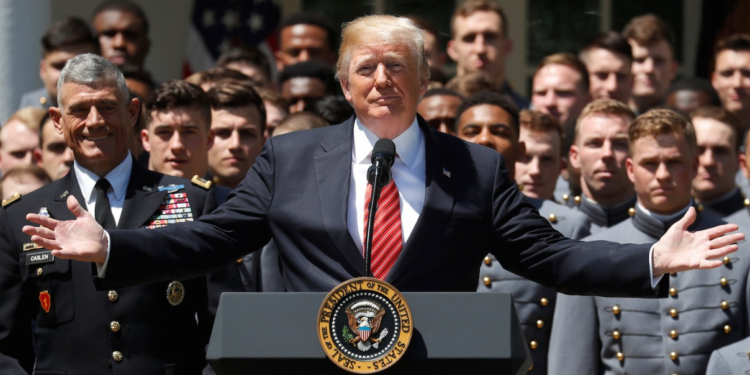The last two calendar years had been very poor for Iran, which faced American sanctions. The Trump regime, which banned the countries from oil purchase from Iran in May 2018 and threatened to impose sanctions if the guidelines not followed, has been able to bring Iran to its toes. In May 2018, US extended waivers to countries like India, but in May last year, the Trump regime announced that ‘no more sanction waivers’ were to be extended on oil purchases from Iran.
This forced countries around the world, especially the American allies and the countries dependent on it, to end oil imports from Iran. The Trump government assumed power in early 2017 and since then it has focused on containing Iran. But very often, the question arises, is the United States’ strength waning?

For India, Iran was consistently second or third-largest exporter of oil to India. In fact, India increased its imports from Iran when US imposed sanctions in May 2018 as it was granted exemption, which resulted in 1.3 million tonnes increase in total imports of FY 19 compared to previous year. But, in May last year, when the exemptions were ended, India also stopped importing from Iran. In FY 20, the total imports of India was just 1.70 million tonnes, which is not even one-tenth of imports last year, as India ended the oil imports in May last year.
2018 and 2019 had been especially bad for Iran’s economy with double-digit inflation ranging from 20 to 60 in the last few months. The Iranian economy shrank by 3.9 per cent in 2018 and predicted to shrink by 6 per cent in 2019; by IMF.
It looks like 2020 is going to even bad for Iran, as in the very first week, the United States has eliminated the most powerful Iranian commander Qasem Soleimani. Soleimani, an Iranian major general in the Islamic Revolutionary Guard Corps (IRGC), was killed in Baghdad, Iraq, in an American airstrike. Known to be the second most powerful man in Iran after the Supreme Leader Ayatollah Khameini himself, Soleimani oversaw the proliferation of Iran’s influence across West Asia, from Iraq, Syria Lebanon and Gaza to Yemen through armed militias and terror organisations.
In 2015, under the Obama administration, the United States reached a deal with Iran on the nuclear issue, but the Trump administration abandoned the deal in 2018, as Iran was not ready to give any further concession than agreed in the deal. The Trump administration, with a more hawkish stance towards the foreign policy, abandoned the deal in May 2018 and imposed economic sanctions. This led to the loss of crucial foreign exchange for Iran, where oil exports account for more than 90 per cent of total exports.
The sanctions have cost Iran heavily, “Iran would have earned $200 billion surplus income…if the country were not involved in an economic war,” said President Hassan Rohani.
One can argue over the legitimacy or morality of the countries buckling under American pressure. But, the reality remains that the United States destroyed Iran in the last two years. The countries like China, UK, and Germany, which had not supported the United States’s unilateral decision to pull out of the 2015 nuclear deal and vowed to help Iran, could not do anything to help Iran’s ailing regime.
In the last few years, there have been legitimate arguments that the world is turning to multilateralism, that America is no longer sole superpower, and China is as powerful as the United States; all these arguments have some elements of truth and substance. But, when it comes to American Exceptionalism or it being the most powerful country in the world; there is still no substantial arguments to disprove this fact. By bringing down Soleimani, despite awareness of the consequences that may follow, Trump has shook Iran’s Islamic regime to its core.
The fiercest critic of American foreign policy like Noam Chomsky, also stated that it is the United States that it is the most powerful country in the world. The way Trump has brought Iran on its knees in the last two years, is another proof of this assertion.


































